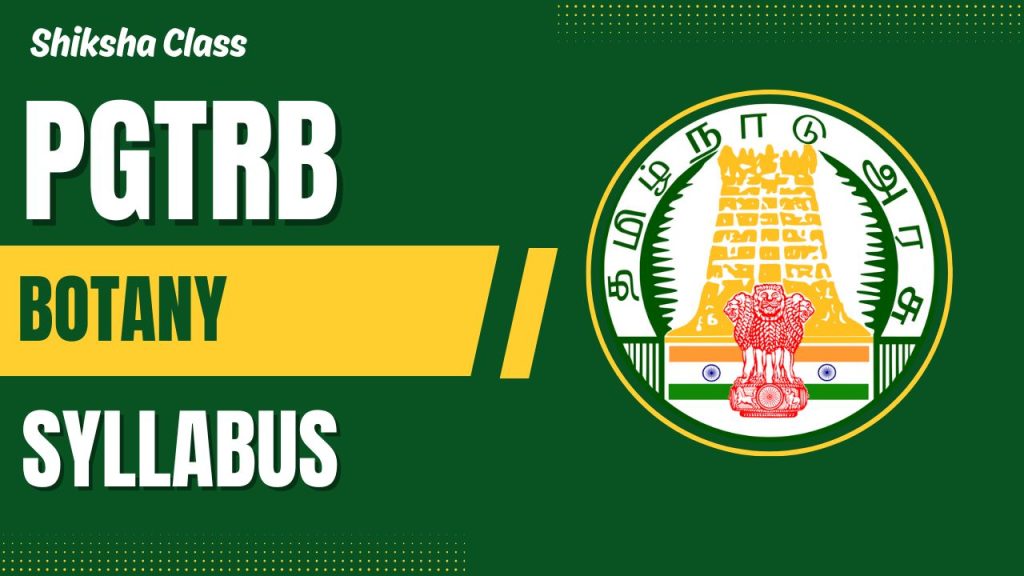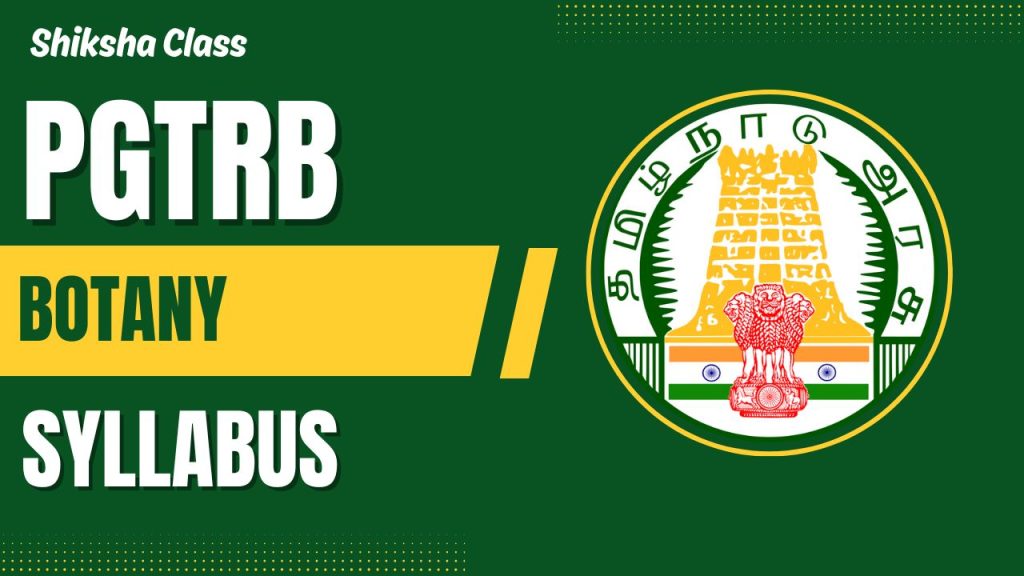PGTRB Botany Syllabus 2025: Complete Breakdown


Unit I: Algae, Fungi, Lichens & Bryophytes
- Algae: General account, Indian Phycologists’ contributions, F.E. Fritsch classification, habitat types, thallus organization, reproduction, life cycles, Cyanobacteria, and economic uses.
- Fungi: Characteristics, Indian Mycologists (C.V. Subramanian), classification by Alexopoulos and Mims, heterothallism, sex hormones, spore dispersal, mycorrhizae, fossil fungi, economic importance, mushroom cultivation.
- Lichens: Morphological classification, interrelationship between phycobiont & mycobiont, types (Ascolichens, Basidiolichens, Deuterolichens), pollution indicators, uses.
- Bryophytes: Features, classification by Proskauer, morphology, life cycle of Marchantiales, Jungermanniales, Anthocerotales, Polytrichales, sporophyte evolution, fossil forms, economic relevance.
Unit II: Pteridophytes, Gymnosperms & Paleobotany
- Pteridophytes: Classification (Reimer), telome theory, stelar evolution, sporangial development, heterospory, seed habit, alternation of generations, comparative study of Psilopsida, Lycopsida, Sphenopsida, Pteropsida.
- Gymnosperms: Characteristics, classification (Sporne), evolution, comparative morphology (Cycadales, Ginkgoales, Coniferales, Gnetales), economic applications.
- Paleobotany: Geological time scale, Birbal Sahni’s contributions, fossilization, fossil classification, dating methods, fossil pteridophytes and gymnosperms.
Unit III: Morphology, Taxonomy & Economic Botany
- Morphology: Root, stem, leaf modifications, inflorescence, floral structures, fruit and seed types.
- Taxonomy & Systematics: Objectives, hierarchy, species concepts, ICN rules, classification systems (Linnaeus to APG), modern techniques (DNA barcoding, cladistics), family-wise features and uses.
- Economic Botany: Uses of plants in food, cosmetics, oils, fibers, timber, medicines, and industry.
Unit IV: Anatomy, Embryology & Microtechniques
- Anatomy: Tissue types, cambium, secondary growth, xylem/phloem structures, secretory tissues, nodal anatomy, stomatal development.
- Embryology: Micro- and megasporogenesis, gametogenesis, incompatibility, fertilization, endosperm types, embryo development, apomixis.
- Microtechniques: Microscopy, microtome use, staining, maceration, embedding, sectioning, light and electron microscopy techniques.
Unit V: Cell Biology, Molecular Biology
- Cell Biology: Prokaryotic/eukaryotic structure, organelles, cell cycle, mitosis/meiosis, genome organization, DNA replication.
- Molecular Biology: Transcription, translation, gene regulation, RNA interference, molecular chaperones, bioinformatics.
Unit VI: Genetics, Biostatistics & Plant Breeding
- Genetics: Mendelian laws, gene interactions, linkage, sex determination, organelle heredity, mutations.
- Biostatistics: Standard deviation, Z, t, chi-square tests, correlation, regression.
- Plant Breeding: Domestication, Vavilov’s theory, hybridization, tissue culture, molecular breeding.
Unit VII: Plant Physiology & Biochemistry
- Physiology: Transport, transpiration, mineral nutrition, photosynthesis (C3, C4, CAM), respiration, nitrogen metabolism, secondary metabolites.
- Growth Regulators: Auxins, gibberellins, cytokinins, ethylene, photobiology, dormancy, stress physiology.
- Biochemistry: Bonds, water, pH, carbohydrates, lipids, proteins, enzymes, nucleic acids.
Unit VIII: Ecology, Environment & Conservation
- Ecology: Autecology, synecology, inter-species interactions, ecological succession, ecosystem dynamics.
- Pollution & Management: Types, bioremediation, biodiversity loss, climate change, IPCC, GIS in ecology.
- Conservation: In-situ/ex-situ methods, indigenous roles, laws, hotspots.
- Phytogeography: Plant distribution, migration, endemism, biogeographic zones.
Unit IX: Microbiology & Plant Pathology
- Microbiology: Bacteria (classification, structure, reproduction), sterilization, genetics, fermentation, archaea, actinomycetes.
- Virology: Structure, classification, multiplication of plant viruses and bacteriophages.
- Pathology: Symptoms, inoculum, epidemiology, host-parasite interaction, defense mechanisms, common crop diseases, management techniques.
Unit X: Plant Tissue Culture, Genetic Engineering & Biotechnology
- Tissue Culture: Micropropagation, organ/mersitem culture, somatic embryogenesis, synthetic seeds.
- Genetic Engineering: Recombinant DNA tech, vectors, gene transfer, PCR, blotting, GM crops, biofarming.
- Biotechnology: Nanobiotech applications, ethics, biosafety, IPR, TRIPS, biodiversity act.
Download PGTRB Botany Syllabus




0 Comments